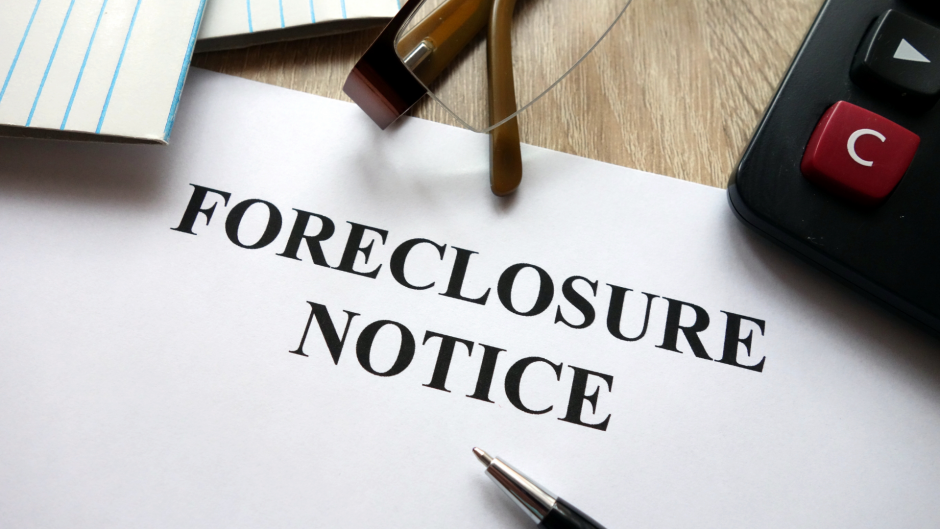Foreclosure is a legal process that has come to be used as a way to force homeowners to move, so they can vacate their current houses. This can be a distressing experience for many homeowners, especially if they are not prepared to relocate. Foreclosure happens when there are no suitable properties to buy that are affordable, and the bank has foreclosed the home. It can be considered a legal process used to put a person in control of a home and collect unpaid real estate taxes and back mortgage payments. There are many ways that a person can get into foreclosure and the lenders may be concerned that the home is worth less than they have loaned on the property.
What happens to a property that is for a foreclosure?
The term “foreclosure” is used by banks and lenders to describe their process of evicting the mortgage holder (or the servicer) of a defaulted mortgage loan. Once the mortgage holder is evicted (sometimes called a “deficiency judgment”), the bank or lender can sell the property at a public auction, though it is more common for the bank or lender to simply shovel the mortgage and related paperwork into a garbage truck and wait for the property to be sold at a public auction.
Stages of Foreclosure
Default Payment
The default payment for a mortgage is known as “interest only” or “amortization”, and it means you are still making payments because you are still paying for the house, but only the interest portion of the loan. You are still responsible for everything from the very beginning, but the lender cannot take any money from your profits. In the beginning, you pay a small amount of interest, usually around 2% to 5% per year. After a while, you have no interest on your loan at all, which means you are still paying the loan itself. You need to make these payments forever, which is why you call it “foreclosure.”
Default Notice
The process of foreclosure is a complicated one. It begins with a default notice, which is a letter that is sent to the mortgage holder of the property, informing them that the mortgage is in default and giving them 30 days to contact the bank and begin the foreclosure process. If this doesn’t go through, the bank can go to court and begin the process of foreclosing.
Trustee’s Sale Notice
One of the first steps in this process is filing a Notice of Trustee Sale. This is a document that is filed in the local court in the county where the property is located,
listing the property’s owner, the amount owed, and a deadline for the defaulting party to either cure the default or have the property sold at the trustee’s discretion.
Sale of Trustees
One significant event in the life of a property is the sale of the trustees for that asset. The trustees are in charge of looking after the property, making a profit when selling it to investors like https://webuyhousesinatlanta.com/woodstock/, and peeking after any money that is left over after the sale of the property (also known as “banking”). In this instance, a 10% commission on the sale proceeds will go to the trustees.
Real Estate Owned (REO)
When a bank forecloses on a house, it typically takes about a month before the bank makes an attempt to sell the home. This gives the bank time to perform a few essential tasks. They will first contact the owner of the house and request payment of a certain amount of money to avoid foreclosure. If they are unable to reach the owner, they might seek assistance from companies like Bond Rees LTD to trace the owner. However, in the event that the owner refuses to pay even after being contacted, they will have to reimburse the amount of money that they have already paid, along with penalties and interest on top of it. Once this occurs, the bank will initiate the foreclosure process, which entails contacting the sheriff to have the house seized.
Eviction
It’s not uncommon for homeowners to have to move out of their homes when they fall behind on their mortgage payments. The process can be stressful and distressing, not to mention, complicated for the members living in the house. It may make the homeowners want to fight to keep their homes, and contact companies similar to Florida Homeowner Solutions in their location to help them out of foreclosure. In some cases, they can get to stay put in their house. However, when the home is lost to foreclosure, the process can be more complicated than just packing up the family and leaving the house.
Going into foreclosure can be a distressing experience, as it means losing your home and drastically altering your life circumstances. However, there are strategies to mitigate the damage and work towards regaining financial stability. One viable option is to consider selling your house in its current condition. It can help you settle your debts with the proceeds from the sale, preventing a complete loss of your investment. Additionally, it can spare you from the lengthy and often expensive foreclosure process. To improve your chances of selling a foreclosed property, it’s essential to find companies, like the ones that advertise their services with catch phrases like “sell my house fast” or “we buy houses fast.” Companies like these can guide you through the process, help determine a fair market price, and assist in finding potential buyers. While losing your home is undoubtedly challenging, proactively exploring options like selling it off can be a crucial step towards rebuilding your financial future.
In conclusion, foreclosure is indeed a stressful and complex legal process that can have significant implications for homeowners and their properties. It is a mechanism used by banks and lenders to recoup unpaid debts when homeowners are unable to meet their mortgage obligations. Throughout this process, there are several stages, from the initial default notice to the eventual eviction of the homeowner. The impact of foreclosure extends beyond financial loss, often taking a toll on the emotional well-being of individuals and families facing displacement from their homes.
Moreover, it is crucial for homeowners to seek assistance and explore alternative options such as loan modifications or working with foreclosure prevention services to potentially avoid this challenging situation. While foreclosure can be a last resort for lenders, they are often willing to work with borrowers to find a mutually beneficial solution. Ultimately, understanding the foreclosure process, seeking professional guidance, and taking proactive steps can help homeowners navigate this difficult journey and, in some cases, preserve their homes.





